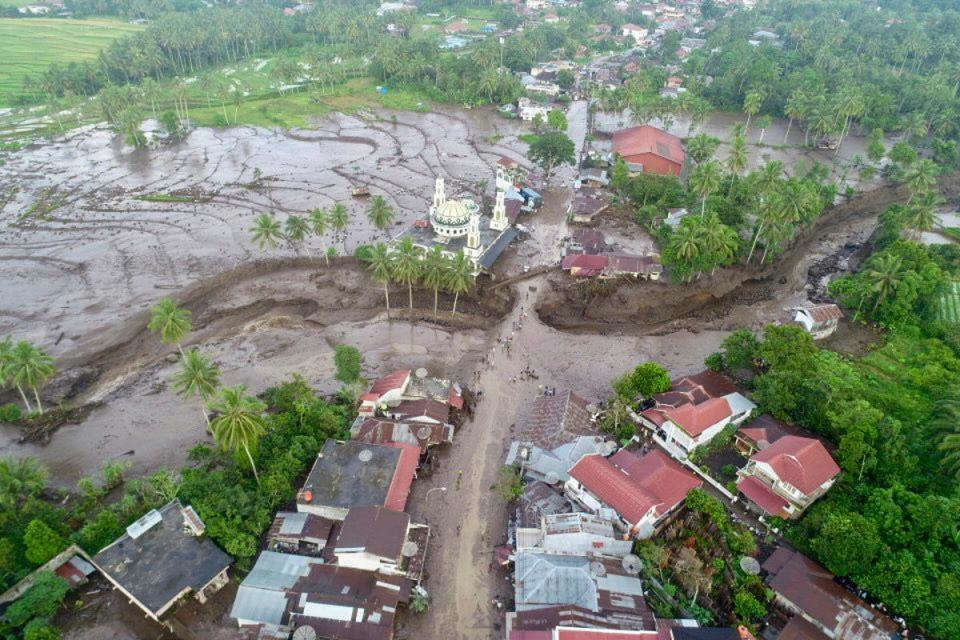Cold lava and floods kill 43 people living near Indonesian volcano

At least 43 people died in flash floods triggered by heavy rains and torrents of cold lava and mud flowing down a volcano's slopes on Indonesia’s Sumatra island.
Officials on Monday said another 17 people remained missing as the search and rescue operation continued.
Torrential rain on Saturday caused flash floods, landslides, and cold lava flow from Mount Marapi in three districts in West Sumatra province.
The deluge tore through mountainside villages and swept away people while submerging nearly 200 houses and buildings and damaging rice fields, said Abdul Malik, the chief of the provincial rescue team.

Cold lava, also known as “lahar” in Indonesia, is a hot or cold mixture of water and rock fragments that flows down the slopes of a volcano and typically enters a river valley.
Rescue officials recovered more bodies on Monday from the worst-hit villages in Agam and Tanah Datar districts. "Bad weather, damaged roads and access blocked by thick mud and debris were hampering relief efforts," said Ilham Wahab, chief of the West Sumatra Disaster Mitigation Agency.
The flash floods over the weekend also left at least 19 people injured. Around 400 personnel, consisting of local rescuers, police, and military have been pressed into action to search for the missing people.
Eko Widodo, a 43-year-old survivor, told Reuters that the floods came instantly. "The flooding was sudden and the river became blocked which resulted in the flow of water everywhere and it was out of control."

Videos released by the National Search and Rescue Agency showed roads transformed into murky brown rivers and villages covered by thick mud, rocks, and uprooted trees.
Heavy rains cause frequent landslides and flash floods in Indonesia, an archipelago nation of more than 17,000 islands where millions of people live in mountainous areas or near floodplains.
The disaster came just two months after heavy rains triggered flash floods and a landslide in West Sumatra, killing at least 26 people and leaving 11 others missing. A surprise eruption of Mount Marapi late last year killed 23 climbers.
Marapi is known for sudden eruptions that are difficult to predict because the source is shallow and near the peak, and its eruptions aren't caused by a deep movement of magma, which sets off tremors that register on seismic monitors, according to Indonesia's Center for Volcanology and Geological Disaster Mitigation.
Marapi has been active since an eruption in January 2024 that caused no casualties. It is among more than 120 active volcanoes in Indonesia. The country is prone to seismic upheaval because of its location on the Pacific "Ring of Fire", an arc of volcanoes and fault lines encircling the Pacific Basin.

 Yahoo News
Yahoo News 
